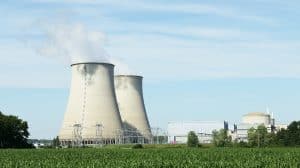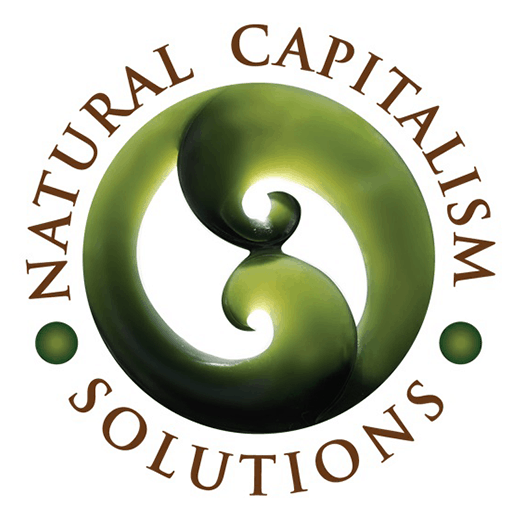
Huffington Post
28 April 2014
Expect the Court to side with the old saw that “all’s fair in love and war.” After all, this is the Court whose majority ruled that dark money is free speech, corporations are people, and the Constitution is a flak vest for pretenders who lie about being decorated war heroes.
Wouldn’t the world be a better place if political candidates were held accountable for lies, intentional distortions, character assassination and over-the-line hyperbole? And wouldn’t it be interesting if entire industries were held to the same higher standard?
For example, the coal industry and its supporters accuse the Obama administration of waging a war on coal. They cite EPA’s intention to limit climate-altering carbon pollution from coal-fired power plants. But as I’ve written before, the administration is not warring against coal; it’s warring against global climate change. It would be closer to the truth to accuse the coal industry of warring against our children’s future.
Another example of corporate distortion is coming from the nuclear power industry in its new Nuclear Matters campaign. The campaign’s leaders, who include several former public officials, are promoting nuclear energy as critical to cutting the nation’s carbon emissions.
This is a legitimate issue that deserves serious public debate. In recent years, several prominent environmental leaders have voiced support for nuclear power as a necessary part of the nation’s fight against global warming. The latest report from the Intergovernmental Panel on Climate Change (IPCC) concludes that the world needs to triple its use of clean energy and do it quickly, including renewables, nuclear power and fossil-fired power plants that capture and store their carbon.Opponents of nuclear power argue that because of the industry’s immortal hazardous wastes, the vulnerability of its power plants to attacks, and the possibility the radioactive materials will fall into the hands of terrorists, there must be simpler, cheaper and safer ways to make steam.The nation’s necessary transition to clean energy is filled with equally interesting and complicated issues. As bloggers for Bloomberg note:
“The 3,200 utilities that operate the (electric) grid haven’t changed their business strategy since Thomas Edison switched on the first power plant in 1882. It’s a monopoly industry that’s now facing a fundamental threat because customers who once had only one choice for purchasing electricity now have the option of producing it themselves.”
How should electric utilities and regulators deal with the beneficial but disruptive impacts of solar and wind power as they are integrated into the traditional power system? The National Renewable Energy Laboratory points out, for example, that wind and solar power can cause fossil-fueled generators to cycle on and off more frequently, leading to greater wear and tear on their equipment. One of the Nuclear Matters arguments has to do with “negative pricing.”
About 200,000 homes and businesses added rooftop solar systems in 2012-13, enough power to replace for or five typical coal plants, according to Bloomberg. An electric utility in Hawaii recently told customers they had to stop putting solar panels on their roofs because the power they were generating might oversaturate the company’s circuits and damage equipment. The utility said it needed time to study the problem.
Then there are questions like these: When utilities try to provide the least expensive electricity to their customers, how will coal and nuclear power compete with wind and solar, whose “fuel” is free? How should we calculate the value of solar in utility rates? And should solar customers be charged a fee for using the grid as backup?
Nuclear Matters cheapens the national conversation about these issues when it opposes federal subsidies of wind energy and state renewable energy standards on grounds that theses policies are “distorting competitive markets and causing otherwise economical, clean electric generators to operate at a loss.” Or as the Institute for Energy Research, another critic of renewable energy subsidies, argues, “freely-functioning energy markets provide the most efficient and effective solutions to today’s global energy and environmental challenges.”
The supposition here is that when the government assists an energy industry, it is picking winners and messing with the magic of the free and competitive marketplace. In reality, a free and fair energy market is a fantasy; it simply does not exist. The federal government has a long tradition of subsidizing energy technologies, resources and behaviors that it or influential special interests consider in the national interest.
One of the heavily subsidized energy industries is nuclear power. It owes its prominent place in America’s energy mix to taxpayer subsidies it has received continuously since the first artificial fission reaction was created 70 years ago. Without the intentional distortion of market signals on its behalf, the nuclear power probably would not exist today.
Moreover, several of the nuclear industry’s subsidies put taxpayers at significant risk. Since 1957, the federal government has helped protect the industry from cost overruns and nuclear accidents. Because private insurers would not insure nuclear plants, Congress passed the Price-Anderson Act that year. Under that law, the nuclear industry pays into a $12.6 billion fund to compensate victims if there is an “incident.” Taxpayers are liable for damages above that amount. Critics argue that the likely damages from a significant incident would far exceed $12.6 billion.
Doug Koplow, one of the nation’s premier experts on energy subsides, notes:
“The public faces the prospect of severe losses in the event of any number of potential adverse scenarios, while private investors reap the rewards if nuclear plants are economically successful. For all practical purposes, nuclear power’s economic gains are privatized, while its risks are socialized.”
By the standard of conventional cost-benefit measures, these subsidies have not always made sense. Koplow notes that the “vast array of preferential government subsidies” for nuclear power has often exceeded the value of the electricity the industry has produced. “Buying power on the open market and giving it away for free would have been less costly than subsidizing the construction and operation of nuclear power plants,” he says. Furthermore, “Subsidies to new reactors are on a similar path.”
Nuclear Matters complains that the wind industry’s Production Tax Credit (PTC) has existed since 1992, even though it was supposed to be temporary. But the same is true for federal support of nuclear power.
“Throughout its history, the (nuclear) industry has argued that subsidies were only temporary, a short-term stimulus so the industry could work through early technical hurdles that prevented economical reactor operation,” Koplow writes. “A 1954 advertisement from General Electric stated that, ‘In five years — certainly within ten,’ civilian reactors would be “privately financed, built without government subsidy.’ That day never arrived and, despite industry claims to the contrary, remains as elusive as ever.”
Federal support for emerging wind and solar power industries has been far less generous than it was for the nuclear and fossil energy industries. In a study of the history of energy subsidies in the United States, venture capitalist Nancy Pfund and Yale University researcher Ben Healey calculated that fossil energy subsidies were five times greater and nuclear energy subsidies were 10 times greater than for renewables during the first 15 years of each industry’s life. “Current renewable energy subsidies do not constitute an over-subsidized outlier when compared to the historical norm for emerging sources of energy,” they concluded.
Thanks to more than a half-century of government support, the nuclear power industry in the United States produces nearly a third of all the nuclear energy generated in the world today, more than any other nation. Nuclear power plants provided 20% of America’s electricity last year, compared to only 4% from wind power. The Exelon Corporation, the largest operator of merchant fossil and nuclear energy plants in the nation and one of the participants in the Nuclear Matters campaign, earned nearly $25 billion last year.
To defend their position in the fictional free market, companies with nuclear interests reportedly employ hundreds of former government officials to lobby Congress on their behalf.
In short, the whining of nuclear power companies and their supporters is like Goliath complaining that David eats too much.
Make no mistake: It’s a very good time to have an honest discussion of the role that nuclear power should play in the future. Many of our nuclear power plants are approaching their planned 40-year lifespan and regulators are facing decisions about whether to relicense them for decades more of operation. Meantime, the Senate is considering whether Congress should renew the PTC for another year.
Indeed, this is a time for many tough choices that involve issues at the heart of our economy and lifestyles. Those choices and even an honest discussion about them will require courage from political leaders with mid-term elections scheduled this fall. Corporate giants will fiercely defend the status quo.
It’s too bad there is no requirement that this debate be honest. It’s up to us voters to sort through the issues and to apply punishment at the polls against those who engage in lies, half lies and distortions.
Follow William S. Becker on Twitter: www.twitter.com/sustainabill[/fusion_builder_column][/fusion_builder_row][/fusion_builder_container]
